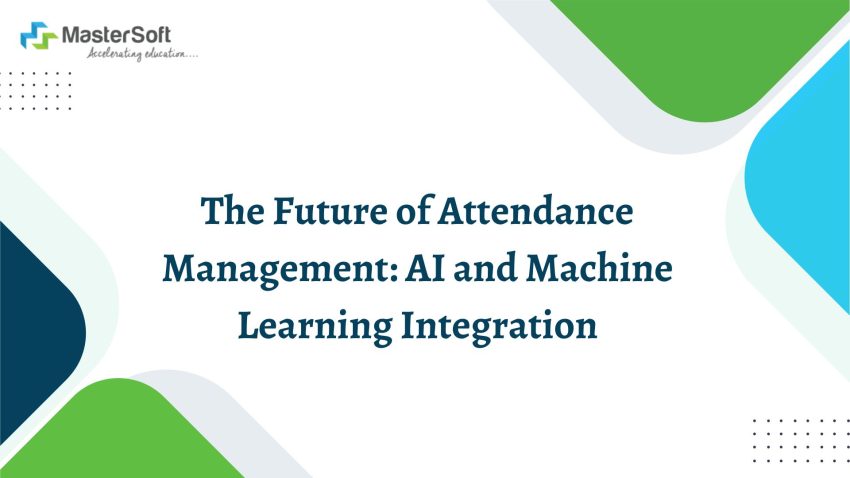In the realm of education, technology continues to reshape traditional practices, paving the way for more efficient and innovative approaches. One such area that has witnessed a transformation is attendance management. Gone are the days of manual roll calls and paper registers. With the advent of cutting-edge technologies like AI (Artificial Intelligence) and Machine Learning, attendance management has evolved into a seamless and intelligent process, revolutionizing the way institutions track and manage student and employee attendance. In this blog, we explore the future of attendance management with the integration of AI and Machine Learning, focusing on advanced systems like Biometric Attendance Management Systems and Attendance Management Software. The Evolution of Attendance Management Attendance management has long been an integral part of educational institutions and workplaces. It serves as a fundamental mechanism to monitor attendance, track punctuality, and ensure compliance with organizational or institutional policies. Traditional methods often involved manual entry of attendance data, which not only consumed valuable time but also left room for errors and inconsistencies. However, the landscape has shifted dramatically with the introduction of technology-driven solutions. These solutions harness the power of AI and Machine Learning to create a more accurate, efficient, and data-driven attendance management process. Biometric Attendance Management Systems: The Vanguard of Accuracy In an age where accuracy and security are paramount, Biometric Attendance Management Systems have emerged as a game-changer. Leveraging biometric identifiers such as fingerprints, facial recognition, and iris scans, these systems provide an unparalleled level of accuracy in attendance tracking. Each individual's unique biometric features serve as their digital signature, ensuring that the attendance data is both reliable and tamper-proof. Biometric systems eliminate the possibility of proxy attendance and "buddy punching," where individuals sign in on behalf of others. This fosters an environment of transparency and accountability, ensuring that attendance records reflect actual presence. Moreover, Biometric Attendance Management Systems seamlessly integrate with existing infrastructure, such as access control systems and time clocks. This integration creates a unified ecosystem that enhances security measures while streamlining administrative tasks. AI and Machine Learning: The Brains Behind Efficiency AI and Machine Learning bring a level of intelligence to attendance management that goes beyond simple record-keeping. These technologies analyze historical attendance patterns, identify trends, and generate insights that can aid in decision-making. For instance, AI algorithms can predict attendance trends for specific days, allowing institutions to allocate resources more effectively. Machine Learning algorithms can also detect anomalies in attendance data. If a student or employee deviates from their usual attendance pattern, the system can trigger alerts for further investigation. This can be particularly useful in identifying potential issues like truancy or irregular working hours. Beyond the Basics: Attendance Management System Attendance Management Software takes the integration of technology a step further. These comprehensive systems combine the accuracy of biometrics with the intelligence of AI and Machine Learning to offer a holistic solution. Real-time Monitoring and Notifications Attendance Management Software enables real-time monitoring of attendance. Whether in an educational setting or a corporate environment, administrators can receive instant notifications about late arrivals or absences. This proactive approach allows for swift interventions and timely communication with students, employees, and their guardians or supervisors. Data Analytics for Informed Decision-Making The software generates detailed reports and analytics that offer insights into attendance trends, patterns, and correlations. Educational institutions can use this data to identify potential issues early, such as declining attendance rates that might indicate disengagement. Employers can use analytics to optimize staffing schedules and address attendance-related productivity challenges. The Road Ahead: A Data-Driven Future The integration of AI and Machine Learning into attendance management marks a significant step towards a data-driven future. As technology continues to advance, we can expect even more innovative features to be incorporated into attendance management systems. Predictive Analytics for Attendance Trends Imagine a system that not only detects current trends but also predicts future attendance patterns. With the power of predictive analytics, institutions can proactively address attendance issues and allocate resources efficiently. Personalized Engagement Strategies AI-driven attendance management could lead to personalized engagement strategies for students or employees. For instance, if a student's attendance starts to decline, the system could trigger personalized messages or interventions to understand and address underlying challenges. Embracing the Transformation In conclusion, the future of attendance management is undeniably intertwined with the integration of AI and Machine Learning. Biometric Attendance Management Systems and sophisticated Attendance Management Software are transforming the landscape by ensuring accuracy, enhancing efficiency, and enabling data-driven insights. As educational institutions and workplaces embrace these advancements, they position themselves at the forefront of progress, ushering in a new era of attendance management that is intelligent, proactive, and empowering.


